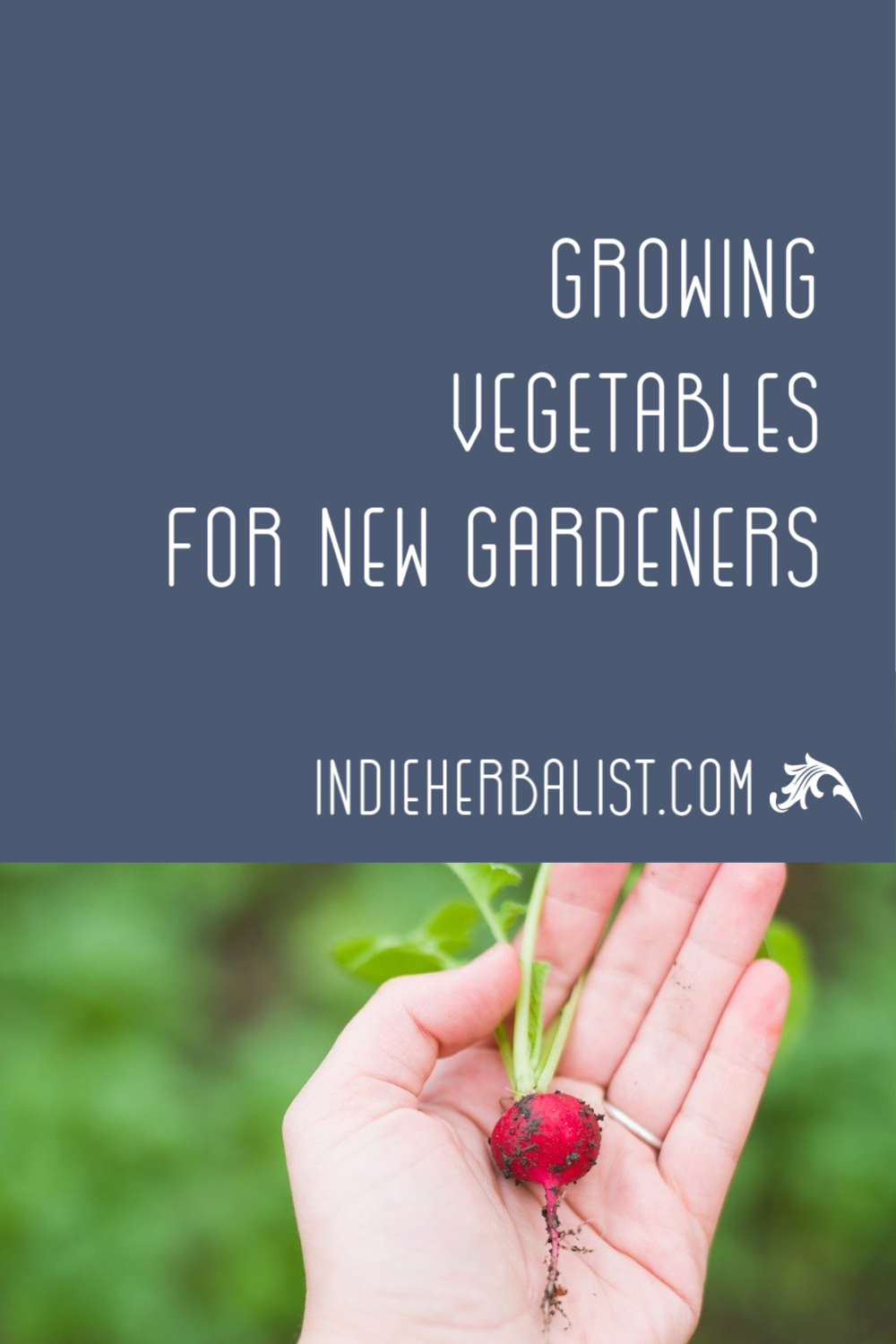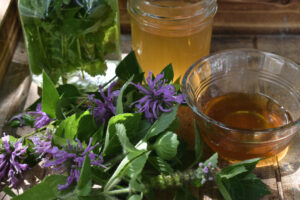Links contained in this post and elsewhere on my website may include affiliate links. When you make a purchase through these links, I earn a commission at no additional cost to you. I only link to products and services that I love - and that I think you will love, too!
The coronavirus pandemic has me even more on edge about food security than usual, and I know I’m not the only one. I’ve always been inclined to stock my pantry well. Part of this comes from living in rural areas where it’s a long trip to the store, but it also comes with being part of a farming family. Plus, my grandparents grew up during the Great Depression, and they always kept a huge garden and put up a lot of food. Gardening has naturally been part of my emergency preparedness plans because of that. So, here’s a quick guide to growing vegetables for all of you beginner gardeners joining our ranks!

(Image Credit: Pixabay)
I feel lucky that I learned how to grow fruits and veggies when I was a kid. I didn’t even think about it at the time; it’s just what we did. However, now I’m incredibly thankful for all of my experiences. Lots of my friends have been asking really intelligent questions about how to get started. I’ve taken some of the recurring questions and written this blog post. This guide to growing vegetables will help you determine when to plant, where to plant, and what to grow.
When can you plant a veggie garden?
There’s a common misconception that you can only start a garden in the spring, but that’s not true. There are many veggies that work well in rotation plantings throughout the summer, and in some areas you can even plant a fall garden. I live in gardening zone 7, and fall gardens do really well here.
In the US, the county extension service is an excellent resource for learning the basics about gardening in your area. Look online for your state university and the county extension service. You should be able to get all the information about when you can start planting and what you can plant.
If you live in Georgia, be sure to get the UGA Extension’s PDF planting calendar (it gives a month by month list of garden to-dos) and the planting chart. The planting chart includes varieties that do well here. There’s also a guide to Starting Seeds for the Home Gardener that’s very helpful. All are free, and you can download and print them to keep on hand.
Where should you plant a veggie garden?
Unless you are trying your hand at hydroponic gardening, you need plenty of sun and good soil. Veggies are full of juicy nutrients, but they have to get it from somewhere. They are relatively needy when it comes to soil nutrients, regular watering, and enough sun to thrive. Your garden site should receive six to eight hours of bright, direct sunlight everyday. Otherwise, your plants won’t survive.
Although a traditional in-the-ground set up is great, it can take a lot of work! Do yourself a favor and learn high-density planting techniques. Good books for this include Square Foot Gardening (#affiliate) and Fresh Food from Small Spaces (#affiliate). I’ve learned a lot from both books, and they are great references to have on your shelf.
If you don’t have access to a big yard, you could still take advantage of a sunny porch or patio, and possibly even window boxes or containers placed strategically in more traditional landscaping. You’d be surprised what kinds of creative, productive gardens can result! The Postage Stamp Garden and Fruit and Vegetables in Pots are two books that are helpful for container gardening.
Another note about hydroponics: I’ve not had much experience with them. However, I’ve seen my mom do some amazing work with a tower hydroponic system as part of outreach where she works. It can be a great way to grow kale, lettuce, and culinary herbs indoors! If you live in an apartment or have limited access outdoors, you might want to consider a hydroponic system. Just remember that most indoor locations will need a set up with lights, because most houses are only bright enough for houseplants (if that!). Food crops need much more light.
What Can You Grow?
You might be surprised at how many types of veggies you can grow at home. That being said, it’s important to focus on three things: nutrient density, what you will actually eat, and what does well in your area.
By nutrient density, I mean how many calories a plant yields. Potatoes, beans, and squash are filling and nourishing. Other root veggies like turnips, carrots, and sweet potatoes are also great! A garden with nothing but kale, tomatoes, and lettuces may look lovely, but it’s not going to go far in filling your belly.
That brings us to the subject of what you will actually eat. If you know you hate zucchini or broccoli, don’t waste the space! Choose vegetables that you like. Growing what you like will also make it less of a chore to tend your garden. If you are excited about the upcoming harvest, you’re more likely to tend your garden consistently.
Within each category of vegetable, you can find many different varieties. These varieties exist for more than just flavor. They are developed with different growing characteristics in mind! One variety may mature quickly, while another may take longer but need less water or be resistant to a pest or disease. Your county extension is likely a good resource for tried and true varieties that will thrive in your area’s growing conditions.
How long will it take to harvest?
Most seed packets will list the “days to harvest” for the variety. It’s usually listed in a range (such as 40-45 days). Greens such as spinach and lettuce are usually quick to mature at around 30 days, but plants like tomatoes can take much longer. As you plan your garden, keep a list of planting dates and days to harvest so you can keep track at a glance.
Some plants like tomatoes, beans, and cucumbers may be indeterminate. This means that once they begin to yield, they will continue to flower and produce more for you to harvest, right up until frost. These harvests will usually come in waves every few days once the plants are established.
You can also maximize your harvest schedule by staggering your planting times. Instead of planting all your carrots, radishes, and beets at once, for instance, create multiple plantings at two- or three-week intervals.
Where to buy seeds
Now that you know the basics, all you need is seeds! Garden centers, hardware stores, and even grocery stores will have seeds available in the spring. I find that it’s much easier to order online. Some of my favorite seed companies are Seed Savers Exchange, Strictly Medicinals, Baker Creek, Burpee, and Eden Brothers.
Seed Savers Exchange
This company carries heirlooms and organic seeds. They are a nonprofit, so I love to support them.
Strictly Medicinals
I buy almost all of my herb plants and seeds from Strictly Medicinals. They also told me about J.L. Hudson, Seedsman – another great place to get herb seeds.
Baker Creek
So many rare seeds! I always find new and unusual herbs and veggies to try at Baker Creek. Their seeds are great quality and have high germ rates.
Burpee
One of the mainstream seed companies. They have good quality seeds and plants and a great selection.
Eden Brothers
Last but not least, Eden Brothers! They have a phenomenal selection, and I’m now partnering with them as an affiliate. Check them out for a great mix of heirloom selections, new varieties, and fun and hard to find vegetables.
That’s my short and sweet guide to growing vegetables. It’s a simple introduction, but I hope it will help you get started and figure out your next steps. I’ve also written an article about seven questions you should ask yourself about survival gardening that you might find helpful. If you are serious about learning more, I highly recommend you connect with your county extension website like I mentioned above.




